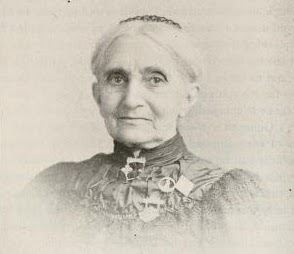Nationality American Name Harriet Dame Known for Civil War nurse | Years active 1861-1865 Occupation Nurse | |
 | ||
Born 5 January 1815 ( 1815-01-05 ) Barnstead, New Hampshire Died April 24, 1900, Concord, New Hampshire, United States | ||
Harriet Patience Dame (January 5, 1815 – April 24, 1900), was a prominent nurse in the American Civil War. Her portrait hangs in the New Hampshire State House.
Contents
Early life
Dame was born in Barnstead, New Hampshire (or North Barnstead) to James Chadbourne and Phebe Ayers on January 5, 1815. Dame was the youngest of five children. In 1843, Dame moved to Concord, New Hampshire where she lived until the outbreak of the Civil War, and worked at various occupations. By 1861, she was running a student boarding house. She had no formal training as a nurse.
Civil War
When war came, Dame, aged 46, approached the recruit training station at Camp Union in Concord and offered her services to officers there. Because the camp had no infirmary, Dame was put into service as a nurse.
Dame served with the 2nd New Hampshire Volunteer Infantry as a matron from June 1861 to Christmas 1865 when the regiment was mustered out of service. She served without furlough through two enlistment periods. Her pay as a hospital matron was six dollars a month until 1863, when the wage increased to ten dollars a month.
The regiment was mainly made up of men from Concord and Exeter, led by Col. Gilman Marston. Dame marched and camped alongside the troops, often as the only woman among a thousand men. She was appointed matron of the 18th Army Corps hospital in September 1864. Her duties included supervising other nurses, and cooking for the hospital patients, often numbering in the thousands. Marston said of her: "Miss Dame was the bravest woman I ever knew. I have seen her face a cannon battery without flinching while a man took refuge behind her for safety from flying shells. She was always present when most needed." She saw action at first Bull Run, second Bull Run, Fredericksburg, and Gettysburg. Dame's tending to the men went beyond medical attention; she would sometimes pick strawberries for the wounded, or write letters home for them. Dame's nursing duties varied as well; sometimes she would oversee supplies, other times she would investigate the sanitary conditions of other regiments. Dame remained at this hospital until the end of active war operations, when she reconvened with the 2nd New Hampshire Regiment. On December 25, 1865, the regiment was mustered out of service, ending Dame's service.
She was twice captured in battle, and released by her captors. At the Second Battle of Bull Run, Dame was taken as a prisoner but released because she cared for Union and Confederate soldiers indiscriminately. In once instance, Stonewall Jackson authorized her return to Union lines.
Post-war life
After the war, Dame was appointed by William E. Chandler to a Treasuy Department clerkship in Washington, D.C., which she held for twenty-eight years until 1895. She did not return to her home state until 1900. Congress voted her a military pension in 1884, though Dame always donated the money to those in needed.
Dame served as the third president of the National Association of Army Nurses of the Civil War, upon the death of Dorthea Dix and resignation of Dr. Susan Edson.
Dame never married. She died in Concord and was buried at Blossom Hill Cemetery.
